Integration of 3CX Phone System and Bitrix24
- Tutorial
Many companies are interested in integrating the installed IP PBX 3CX Phone System with the Bitrix24 corporate portal. In this article we will look at how to make such an integration.
First of all, we note the shortcomings of such integration. The fact is that in this case, the PBX turns into a simple gateway that provides communication on its external lines (connections). You can see statistics, send calls on the most profitable route and use your SIP numbers and gateways, however, all the wide functionality of the PBX will not be available to you. It is available only if you will make calls from the 3CXPhone company client or a connected IP phone, but not from the Bitrix24 Desktop application. This is due to the Voximplant SIP connector technology that Bitrix24 uses. Combining systems, we create a connector that intercepts all incoming calls in 3CX and directs them to processing in Bitrix24. Next, Bitrix24 itself distributes calls between users.

Outgoing calls work on the same principle, but with a slight difference. A Bitrix24 user connects with the credentials of his extension to the 3CX Phone System and makes a call through the system core. Thanks to this, call statistics are available in 3CX, and some versatility is possible, i.e. the user can use both the Bitrix24 application and the 3CXPhone client.
We will begin the integration setup by creating the 3CX> Bitrix24 connector. In Bitrix24, in the Telephony> Balance and Statistics section, check the possibility of connecting a SIP connector and click the Connect button . Under Telephony> Manage numbers, click Connect PBX . You can specify the public IP address of your 3CX server and any login and password. In fact, these data do not matter. Then click the Connect button . The PBX connection settings will open, where we are only interested in the right side Incoming calls . The parameters specified here must be configured in the SIP trunk from the 3CX side.
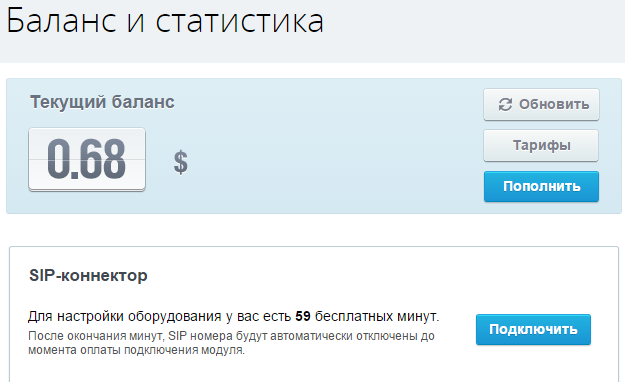
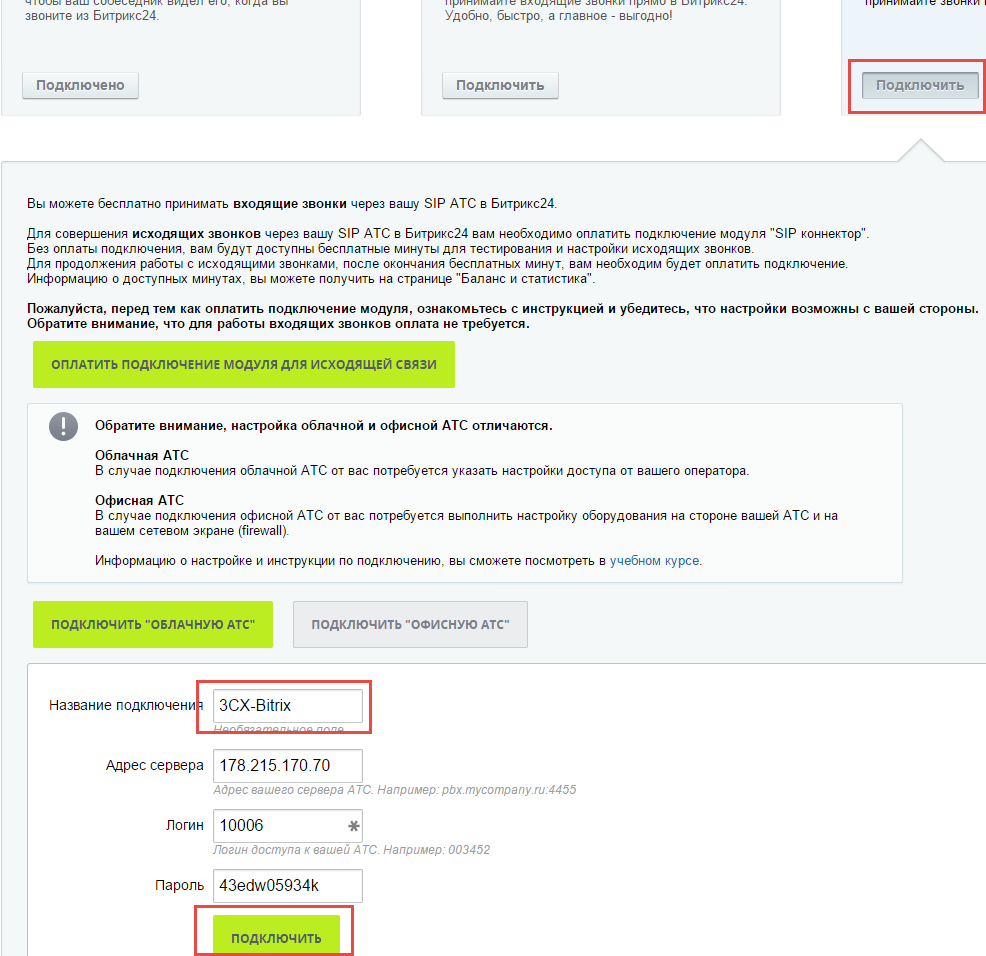
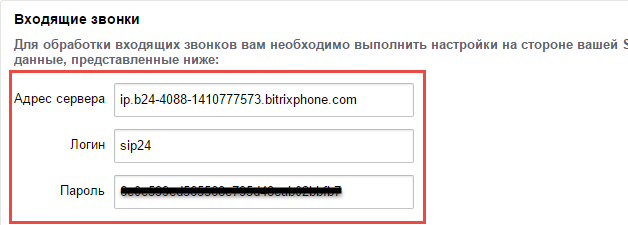
Now configure the SIP trunk from the 3CX Phone System. Choose Generic - Generic VoIP Provider . The name of the SIP server is taken from the settings issued by Bitrix24. The External number field does not matter. The Maximum concurrent calls parameter should be no less than the maximum number of calls that can be received via 3CX Phone System external lines. Since this connector only serves to send 3CX> Bitrix24 calls, incoming calls to it are not provided. We will not create an outgoing rule yet. Click Skip . Then go to the trunk settings and go to the Outgoing parameters tab . Parameter
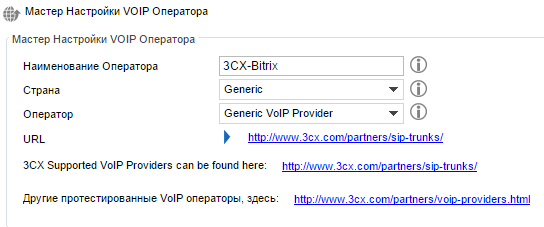
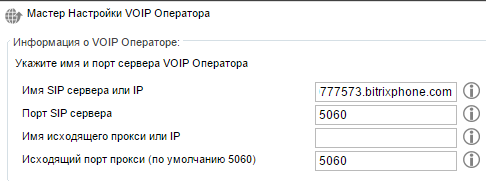
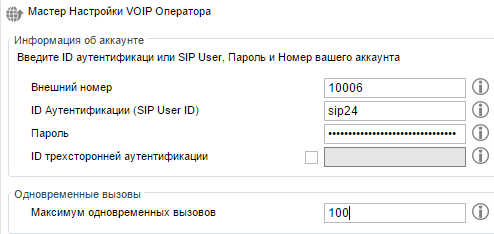
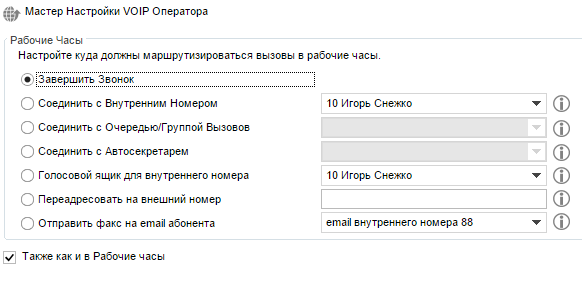
From: Display Name change to Originator Caller ID . This must be done so that the Caller ID of the incoming call is correctly transferred from 3CX to Bitrix24. Remember to click OK to apply the changes. Verify that the trunk has successfully registered with Bitrix24. Next, you need to route all incoming calls (or just some that you would like to “pass” through Bitrix24) through the 3CX> Bitrix trunk to the Bitrix24 cloud. To do this, we will use one trick: we will create an outgoing rule that will send all numbers with the bitrix24 prefix to the 3CX-Bitrix trunk. Then, on all external lines that should start in Bitrix24, set the transfer to the external number bitrix24
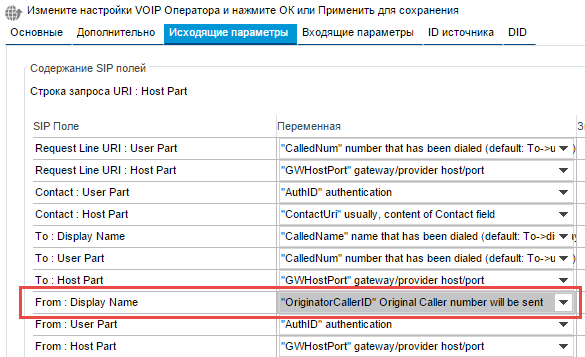


. Now all calls coming to these lines will bypass 3CX in the Bitrix24 cloud and be distributed there to users using Bitrix24. An incoming call looks like this. Note that if you need to know exactly which external line the call came to, you can create individual trunks between 3CX and Bitrix24 for each 3CX external line and give them specific names. And then route calls from a specific 3CX trunk to its corresponding trunk.
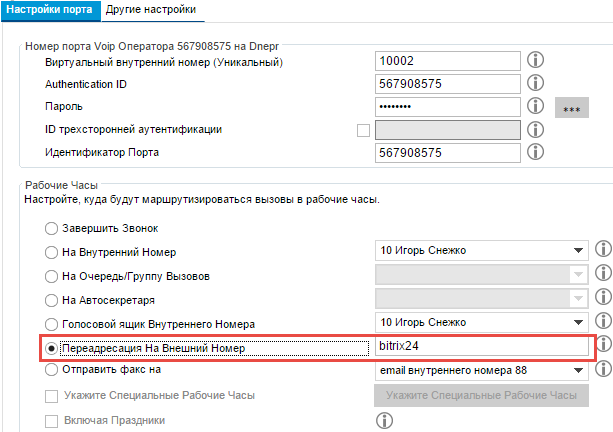
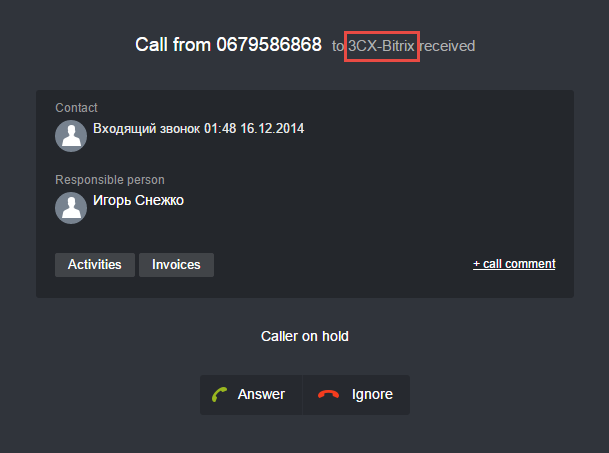
Outgoing calls are made as follows: a Bitrix24 user uses a personal Bitrix> 3CX SIP trunk to connect with the credentials of his extension number to the 3CX system and calls through it just like he would call from a 3CXPhone client or any other SIP phone. The only difference is that the number must be dialed in the full international format, i.e. including country code.
If you are using the cloud version of Bitrix24, allow the incoming connections on the firewall for the IP address of the Bitrix SIP connector. If Bitrix24 is located locally, this is optional.
Find out the IP address of the connector. And set up the firewall. Here is an example of setting up a Mirotik firewall .
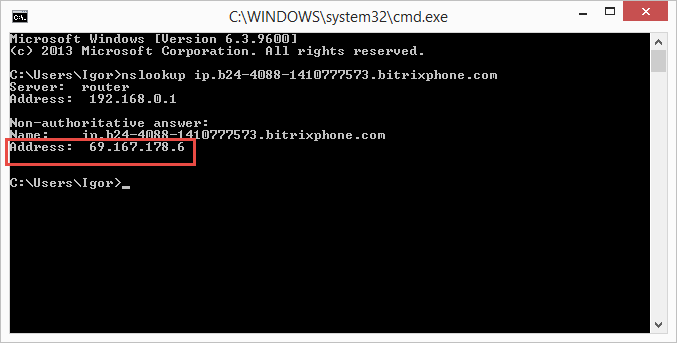

Next, you need to allow the appropriate users (extensions) to have external SIP connections, since the Bitrix24 cloud connects from 3CX from the outside. If Bitrix24 is located locally, you do not need to do this. Now create a Bitrix connector for the extension. Let it be number 10. In this case, the public IP address of the 3CX Phone System and the credentials of extension 10, which can be viewed in the 3CX management console, are indicated. Similarly, connections are created for all extensions. Now, each Bitrix24 user needs to specify the same extension number and indicate through which SIP trunk to make outgoing calls. This will be the user's personal SIP trunk. This is done in the Telephony > Users section .
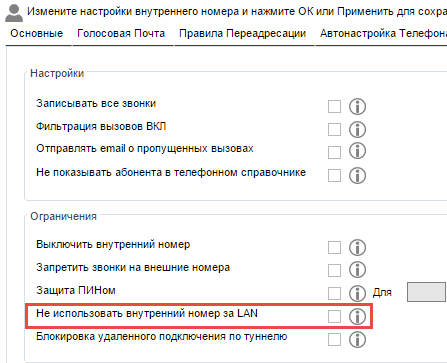
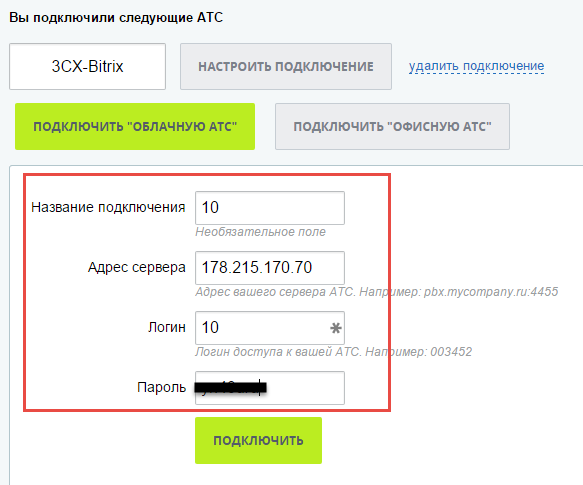
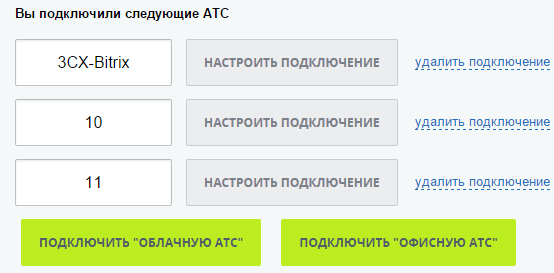
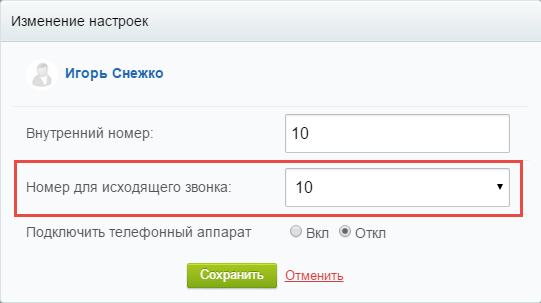
After setting, the list of users will look like this. Now the user will be able to make outgoing calls through the 3CX Phone System. If you have shortened dialing for some operators in 3CX, for example, without a country code, create the corresponding outgoing rules (as was said, Bitrix24 does not understand abbreviated dialing). An outgoing call looks like this. This completes the integration of 3CX Phone System and Bitrix24.
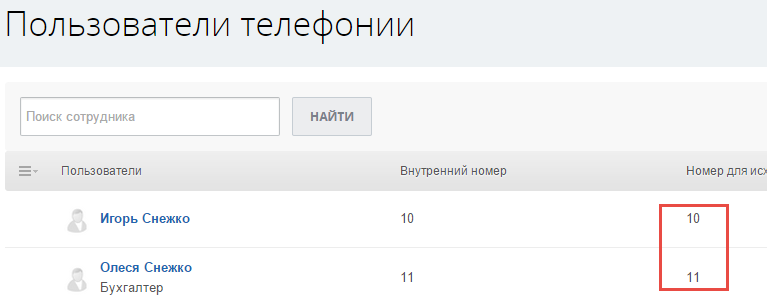
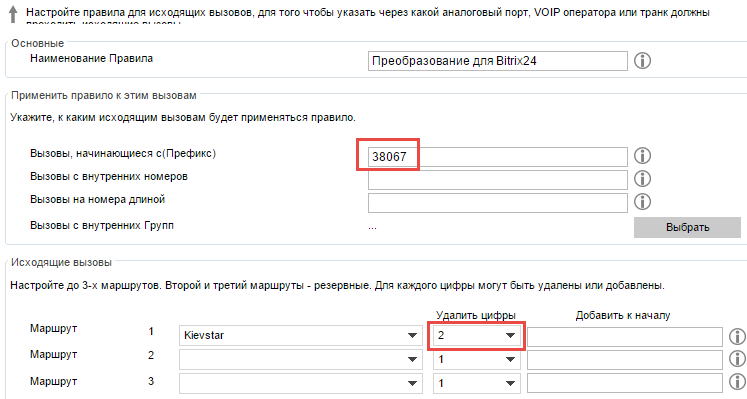
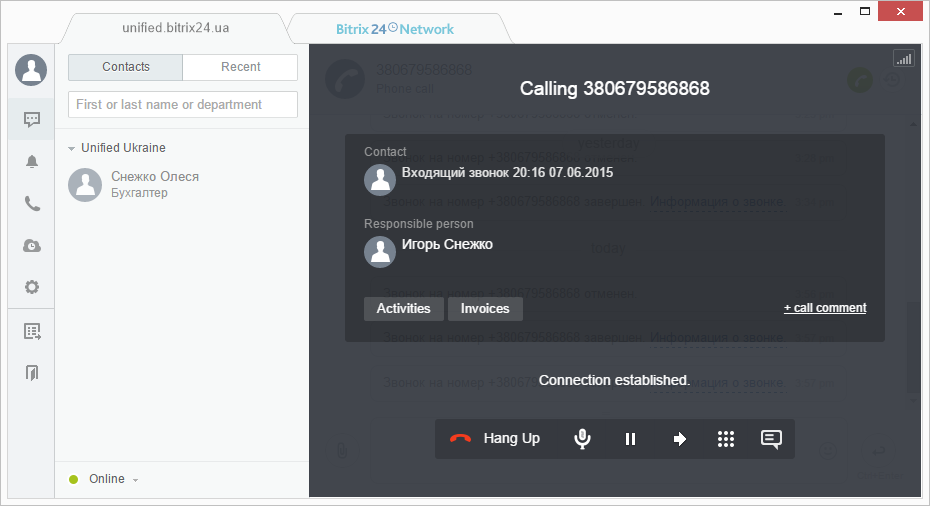
First of all, we note the shortcomings of such integration. The fact is that in this case, the PBX turns into a simple gateway that provides communication on its external lines (connections). You can see statistics, send calls on the most profitable route and use your SIP numbers and gateways, however, all the wide functionality of the PBX will not be available to you. It is available only if you will make calls from the 3CXPhone company client or a connected IP phone, but not from the Bitrix24 Desktop application. This is due to the Voximplant SIP connector technology that Bitrix24 uses. Combining systems, we create a connector that intercepts all incoming calls in 3CX and directs them to processing in Bitrix24. Next, Bitrix24 itself distributes calls between users.

Outgoing calls work on the same principle, but with a slight difference. A Bitrix24 user connects with the credentials of his extension to the 3CX Phone System and makes a call through the system core. Thanks to this, call statistics are available in 3CX, and some versatility is possible, i.e. the user can use both the Bitrix24 application and the 3CXPhone client.
Incoming calls
We will begin the integration setup by creating the 3CX> Bitrix24 connector. In Bitrix24, in the Telephony> Balance and Statistics section, check the possibility of connecting a SIP connector and click the Connect button . Under Telephony> Manage numbers, click Connect PBX . You can specify the public IP address of your 3CX server and any login and password. In fact, these data do not matter. Then click the Connect button . The PBX connection settings will open, where we are only interested in the right side Incoming calls . The parameters specified here must be configured in the SIP trunk from the 3CX side.



Now configure the SIP trunk from the 3CX Phone System. Choose Generic - Generic VoIP Provider . The name of the SIP server is taken from the settings issued by Bitrix24. The External number field does not matter. The Maximum concurrent calls parameter should be no less than the maximum number of calls that can be received via 3CX Phone System external lines. Since this connector only serves to send 3CX> Bitrix24 calls, incoming calls to it are not provided. We will not create an outgoing rule yet. Click Skip . Then go to the trunk settings and go to the Outgoing parameters tab . Parameter




From: Display Name change to Originator Caller ID . This must be done so that the Caller ID of the incoming call is correctly transferred from 3CX to Bitrix24. Remember to click OK to apply the changes. Verify that the trunk has successfully registered with Bitrix24. Next, you need to route all incoming calls (or just some that you would like to “pass” through Bitrix24) through the 3CX> Bitrix trunk to the Bitrix24 cloud. To do this, we will use one trick: we will create an outgoing rule that will send all numbers with the bitrix24 prefix to the 3CX-Bitrix trunk. Then, on all external lines that should start in Bitrix24, set the transfer to the external number bitrix24



. Now all calls coming to these lines will bypass 3CX in the Bitrix24 cloud and be distributed there to users using Bitrix24. An incoming call looks like this. Note that if you need to know exactly which external line the call came to, you can create individual trunks between 3CX and Bitrix24 for each 3CX external line and give them specific names. And then route calls from a specific 3CX trunk to its corresponding trunk.


Outgoing calls
Outgoing calls are made as follows: a Bitrix24 user uses a personal Bitrix> 3CX SIP trunk to connect with the credentials of his extension number to the 3CX system and calls through it just like he would call from a 3CXPhone client or any other SIP phone. The only difference is that the number must be dialed in the full international format, i.e. including country code.
If you are using the cloud version of Bitrix24, allow the incoming connections on the firewall for the IP address of the Bitrix SIP connector. If Bitrix24 is located locally, this is optional.
Find out the IP address of the connector. And set up the firewall. Here is an example of setting up a Mirotik firewall .


Next, you need to allow the appropriate users (extensions) to have external SIP connections, since the Bitrix24 cloud connects from 3CX from the outside. If Bitrix24 is located locally, you do not need to do this. Now create a Bitrix connector for the extension. Let it be number 10. In this case, the public IP address of the 3CX Phone System and the credentials of extension 10, which can be viewed in the 3CX management console, are indicated. Similarly, connections are created for all extensions. Now, each Bitrix24 user needs to specify the same extension number and indicate through which SIP trunk to make outgoing calls. This will be the user's personal SIP trunk. This is done in the Telephony > Users section .




After setting, the list of users will look like this. Now the user will be able to make outgoing calls through the 3CX Phone System. If you have shortened dialing for some operators in 3CX, for example, without a country code, create the corresponding outgoing rules (as was said, Bitrix24 does not understand abbreviated dialing). An outgoing call looks like this. This completes the integration of 3CX Phone System and Bitrix24.



